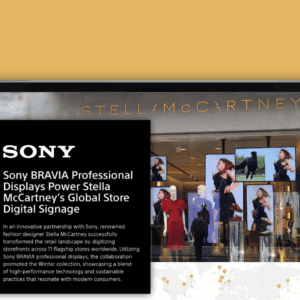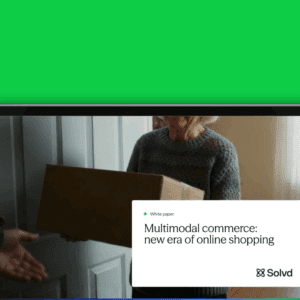
Consumers shop for many reasons, but
they often shop for one purpose that has little to do with the products they are looking to buy:
it makes them feel good. In fact, almost all of American adults (96%) and
teenagers (95%) participate in some form of “retail therapy,” according to a
survey from Ebates.
Engagement in retail therapy is often driven by factors such
as boredom and seasonal changes. As many as 66% of adults and 75% of teens
indicate that shopping is a great cure for boredom, while 45% of adults
revealed that the seasonal changes are the biggest motivator to go shopping.
In this week’s Editor Q&A, the RTP team discusses the retail therapy concept, and how merchants can
better cater these consumer needs.
Debbie Hauss,
Editor-in-Chief: I know many people who use retail as therapy, so the
retailers that are not taking advantage of this opportunity are missing out on
significant sales. The challenge is presenting opportunities that don’t make
shoppers feel guilty about their therapy-oriented purchases. While this next
suggestion is made a bit tongue-in-cheek, it might just be a brilliant move:
Retailers may want to consider consulting a real therapist to help craft the
type of communications that will entice consumers to get out and shop during
times they might not otherwise be shopping. They also could take a lesson
from Hallmark, which has created “holidays” for
occasions that are not really holidays, such as Tax Day and Ferris Wheel Day.
Adam Blair, Executive
Editor: People often refer to shopping as “retail therapy” or
jokingly refer to themselves as “shopaholics,” but certainly there’s
truth behind the humor, as these survey results have shown. Obviously, for many
people shopping has the ability to soothe, satisfy, elate – or simply to fill
up a few empty hours. It’s not a good or a bad thing but simply a fact of life
in a capitalist society, and there are certainly far more harmful things to be
addicted to. However, I’m not sure there’s much that retailers can (or perhaps
even should) do to take advantage of this widespread “condition,”
beyond the efforts they already pour into marketing, advertising and social
outreach.
Alicia Fiorletta,
Content Strategist: As Debbie noted, there are some retailers that
capitalize on the moments when shoppers may have more disposable income or may
be more willing to shop for discretionary items. I’ve seen a few retailers roll
out special sales during the holidays, touting taglines like, “buy one for
your friend, buy one for yourself!” However, I think the most powerful way
brands can capitalize on retail therapy is to focus first and foremost on inspiring
shoppers. This can come in many forms: User-generated content, curated outfits,
more compelling displays, etc. It’s just a matter of retailers thinking about
what consumers want from an educational and inspirational perspective, and
delivering that content and information across all channels.
David DeZuzio,
Managing Editor: Barring extreme cases of true shopaholics, there is
nothing wrong with a little retail therapy. Retailers are doing everything they
can to get people to think of the entire year as the perfect time to shop, so
in reality, the “boring months” are probably just a few scattered weeks
throughout the year. It would be great to see at least one retailer capitalize
on the “retail therapy” angle for a marketing campaign. It may come off as a
parody of all of the medication commercials that permeate our television
experiences: “Shop at retailer X and experience the following side effects: new
pants; new shoes; new jewelry; new you.” Might as well have fun with the
concept.
Klaudia Tirico, Associate
Editor: I’m definitely an advocate of retail therapy, and can attest that
shopping is a cure for boredom. But if brands or retailers start pushing
“boring” times of the year, they might turn consumers off. With so many
e-Commerce sites on the market, there will always be a time and place where
someone could snag a deal. What retailers should do is use social media to push
products and promotions for so-called bored consumers, because doesn’t everyone
go on Instagram or Pinterest when they’re bored? I know I do. A cool solution
is LIKEtoKNOW.it, a
platform that sends users an email with shopping information of the products in
the photos they “like” on Instagram. As long as the photo has a “liketk.it” URL in the caption,
users can get everything they need to find and buy the product right in their
inbox. Pinterest also lets businesses implement a “buy it”
button to their pins so users can buy the product without leaving the
app. These unique ways to shop will definitely set retailers apart from their
competitors and cure their customer’s boredom at the same time.
Glenn Taylor, Associate Editor: No matter what, there are always opportunities to deliver a pick-me-up to consumers. We see with the marketing and advertising in every medium available that retailers have been cognizant of this opportunity. However, I think the success of initiatives aimed at retail therapy depends heavily on the brand’s understanding of the consumer. The retailer has to relate to those shoppers if they ever truly want to cater to those personal needs. Everyone has a different reason they want to feel good, or blow off steam, so not every retailer’s attempt at this is guaranteed to work. With that said, retailers have been doing a much better job gathering data as of late, so it wouldn’t surprise me if some were able to base campaigns around consumers’ daily habits to try to convince them to shop at their stores.






